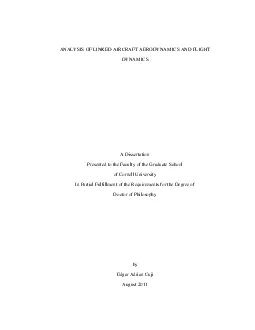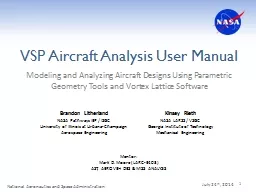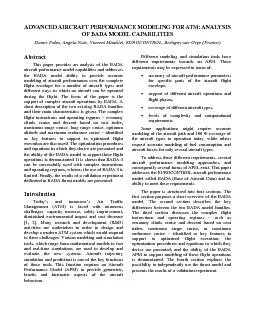PDF-ANALYSIS OF LINKED AIRCRAFT
Author : deborah | Published Date : 2021-08-25
2011Edgar Adrian CujiAERODYNAMICS AND FLIGHT DYNAMICSEdgar Adrian Cuji Ph D Cornell University 2011In this researchI have analyzed different aircrafts with nonconventional
Presentation Embed Code
Download Presentation
Download Presentation The PPT/PDF document "ANALYSIS OF LINKED AIRCRAFT" is the property of its rightful owner. Permission is granted to download and print the materials on this website for personal, non-commercial use only, and to display it on your personal computer provided you do not modify the materials and that you retain all copyright notices contained in the materials. By downloading content from our website, you accept the terms of this agreement.
ANALYSIS OF LINKED AIRCRAFT: Transcript
Download Rules Of Document
"ANALYSIS OF LINKED AIRCRAFT"The content belongs to its owner. You may download and print it for personal use, without modification, and keep all copyright notices. By downloading, you agree to these terms.
Related Documents














